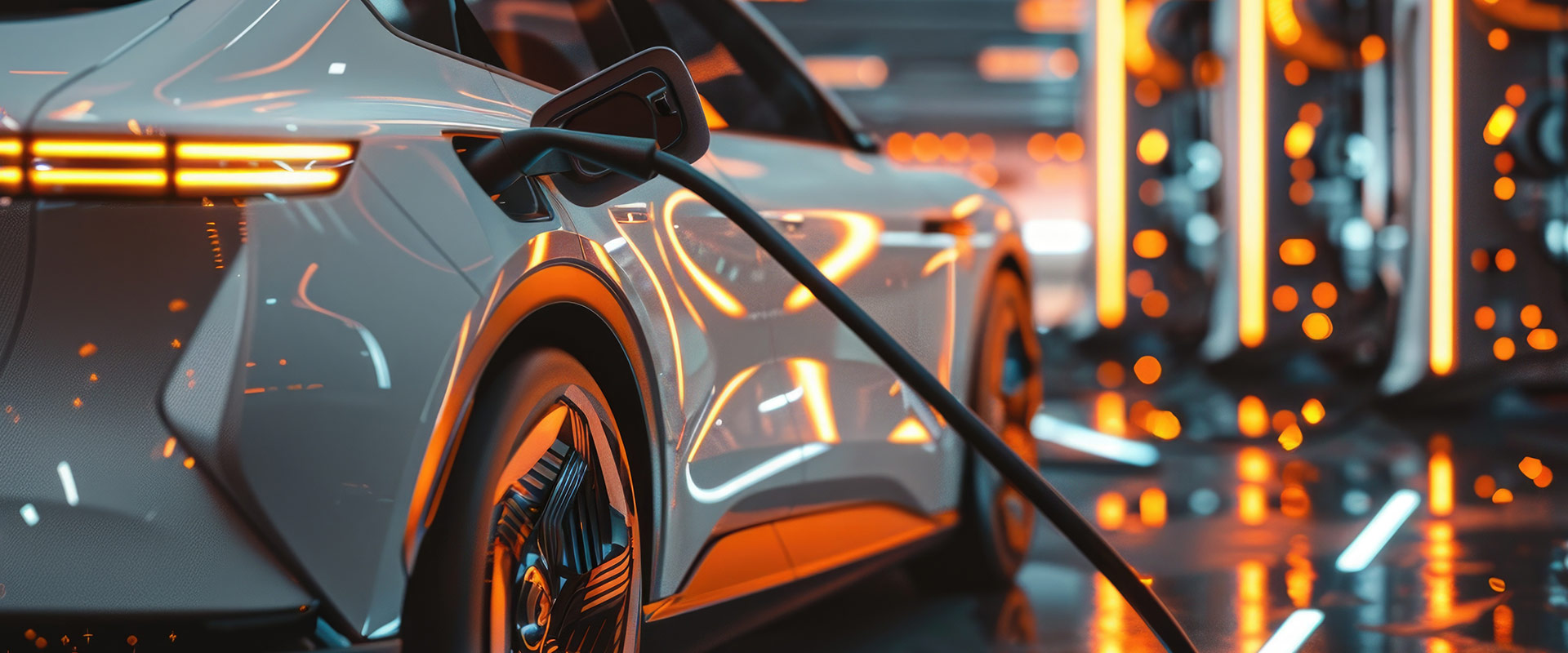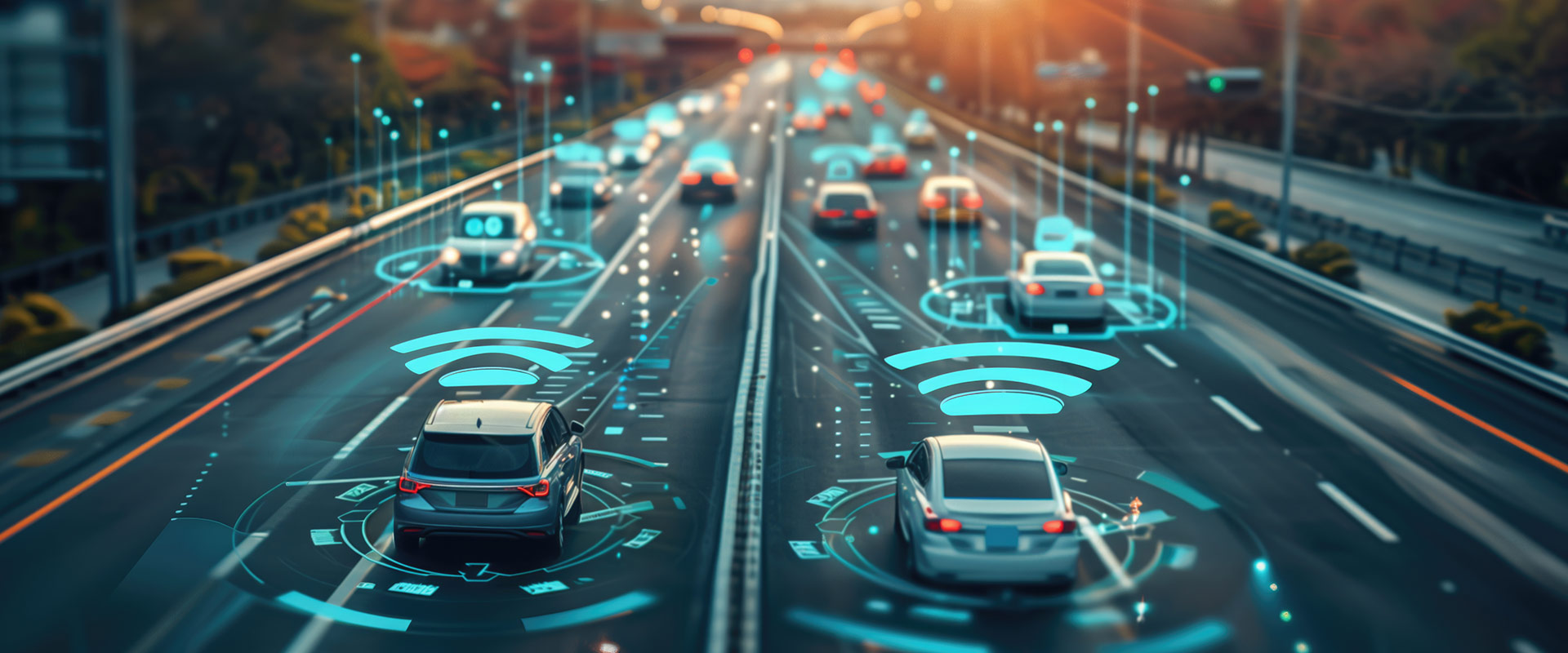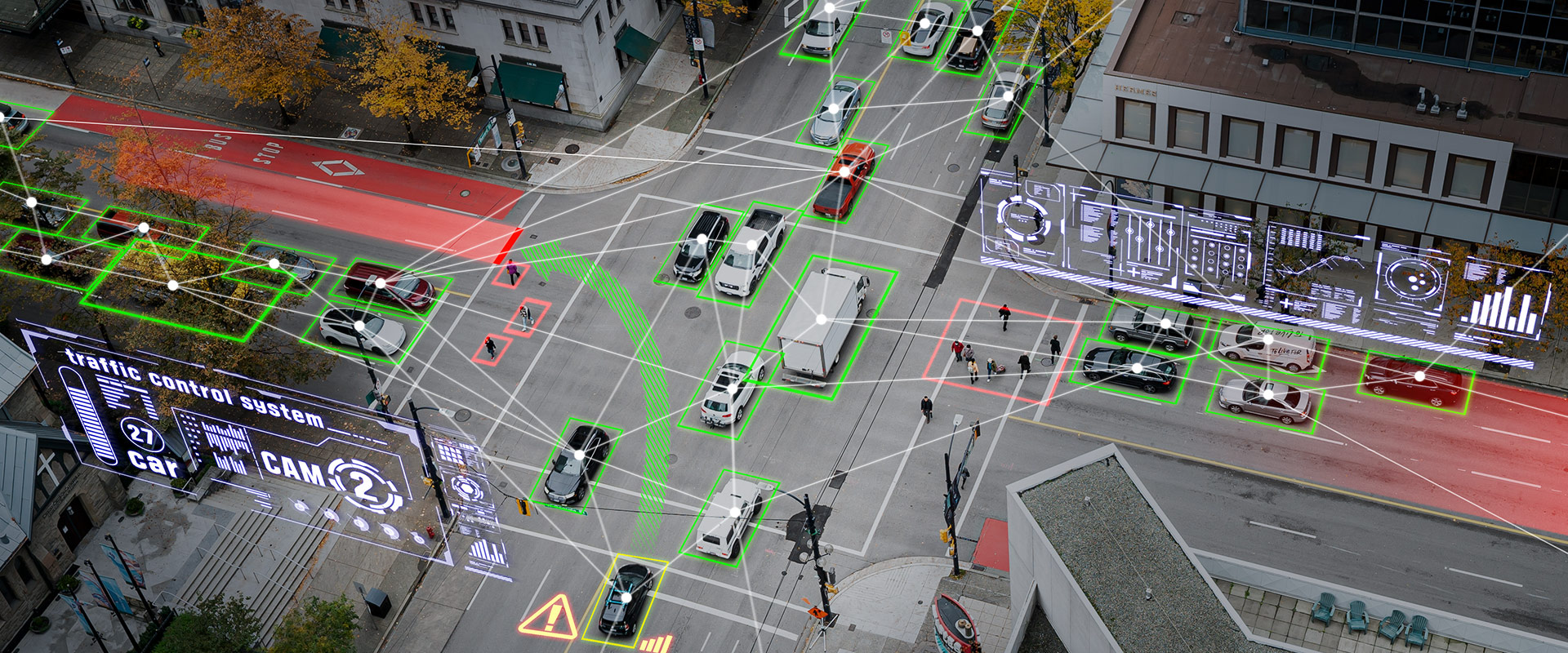ENABLING THE
VEHICLE INNOVATION
The Automotive Industry & Amphenol’s Role.
THE AUTOMOTIVE EVOLUTION
Over the past decade, the automotive industry has undergone significant changes, driven by various challenges and innovations. Key among these are:
Electrification: The shift to electrified drivetrains across consumer and commercial applications, and the growing demand for sustainable energy infrastructure.
- Smart Technology: The development of assisted driving (ADAS) and AI-enabled smart cabin features.
- Urban Dynamics: Population shifts from urban to rural areas, coupled with increased pollution and congestion in cities.
- Global Trade: Challenges in global trade and material shortages.
- Consumer Trends: A rising need for individualization in vehicles alongside the growth of shared mobility.
Amphenol Automotive is at the forefront of driving vehicle innovation through its advanced manufacturing and engineering expertise. With a focus on delivering high-performance interconnect solutions, Amphenol Automotive plays a crucial role in enabling the next generation of vehicles—ranging from electric to autonomous and connected technologies. Here are what innovation trends that we, Amphenol Automotive, see in the industry as we continue to contribute with innovative solutions to meet these demands.

ELECTRIFICATION OF SYSTEMS AND VEHICLES
Electric vehicles and their accompanying infrastructure represent a key contribution to the global reduction of carbon and other gas emissions. Transportation is a major contributor to the use of fossil fuels. The shift to electric propulsion and a cleaner transportation infrastructure is a critical component of reducing the global carbon footprint.
System Requirements:
- Electric Drivetrain: Components and sub-systems that provide propulsion using electric power.
- HV Connectors / Aux Connectors: High-voltage and auxiliary connectors that ensure safe and efficient power transmission within the vehicle.
- Charge Inlets and Infrastructure: Components that facilitate the charging of electric vehicles, including vehicle inlets and assemblies into the drivetrain.
- Onboard Charger: Systems within the vehicle that convert AC power from the grid to DC power for the battery.
- Battery Systems / Energy Storage: Efficient and reliable energy storage solutions that power the electric drivetrain.
- H2 Fuel Cell / Energy Storage: Hydrogen fuel cells as an alternative energy storage solution for electric propulsion.
- Power Electronics and Power Management: Systems that manage the distribution and conversion of electrical power within the vehicle.
Amphenol Automotive’s Contribution:
Amphenol Automotive is leading the electric vehicle trend with:
- HV Connectors / Aux Connectors: Providing a wide variety of reliable, safe, multi-material high-voltage connectors, fuse boxes, and low voltage connectors critical for EV operation, customizable based on weight, bend, and material requirements.
- Charge Inlets: Across almost all major standard interphases (NACS, CCS1, CCS2, GB/T), providing on-vehicle inlets as well as external charging connectors and assemblies; our inlets can be LED- and sensor-equipped, cooled or non-cooled, and customizable based on vehicle dimensions.
- Busbars: Supporting electrical distribution within the vehicle efficiently and in a flexible design that can incorporate sensors, lamination, and connectors directly integrated into the busbar. Using a variety of base materials, over molding, powder coating, lamination, or other technologies.
- Power Electronics: Enhancing power management systems to optimize the performance of electric drivetrains.
- H2 Fuel Cell: Supplying fuel cell vehicles and systems with busbars, connectors, and harnesses.
- Small Harnesses: Offering flexible wiring solutions that accommodate the complex electrical systems of electric vehicles while minimizing weight and complexity.
- USB Chargers and Media Hubs: Providing power and data connectivity for in-vehicle consumer electronics.
Amphenol Automotive’s innovative solutions comprehensively address the needs of passenger and commercial electric vehicles on the road, forming a reliable and safe base for addressing the challenges and opportunities presented by this evolving industry and ensuring a seamless and sustainable transition to the future of mobility.

CONTINUOUS CONNECTIVITY
Connected vehicles are equipped with advanced communication technology, enabling data exchange with other vehicles, infrastructure, and systems for enhanced safety and convenience. Connectivity in vehicles involves integrating various systems that communicate with each other to provide real-time information and improve the driving experience.
System Requirements:
- High-speed data communication: Essential for real-time data exchange between vehicle systems, other vehicles (V2V), and infrastructure (V2I).
- Scalable functions / Updatable systems: Ensuring that vehicle software can be updated remotely to enhance functionality and security.
- Scalable network / Ethernet: Providing a robust and flexible network architecture capable of handling increased data loads.
- Software-defined functions: Allowing vehicle features and functions to be controlled and modified through software updates.
- Connected systems – Antennas: Ensuring reliable and efficient communication between the vehicle and external networks.
Amphenol Automotive’s Contribution:
Amphenol Automotive supports the Continuous Connectivity trend through:
- Zonal Architecture: Streamlining vehicle communication systems by reducing the complexity of wiring and improving data flow.
- High-Speed Data: Ensuring rapid and reliable data transfer between various vehicle systems.
- Automotive Ethernet: Providing robust networking solutions that support high-speed data communication within the vehicle.
- Advanced Lighting: Enhancing visibility and communication through smart lighting solutions that interact with other vehicles and infrastructure.

AUTONOMOUS DRIVING
Autonomous driving technology enables vehicles to navigate and operate without human control, using sensors, AI, and automation for safer transportation. Autonomous vehicles rely on a complex network of sensors, cameras, radar, and lidar to perceive their environment and make driving decisions.
System Requirements:
- ADAS Sensors: Advanced Driver Assistance Systems (ADAS) sensors, including cameras, radar, and lidar, are critical for detecting and responding to the environment.
- Data Safety and Security: Ensuring that data collected and processed by the vehicle’s systems is secure and protected from cyber threats.
- Secure Power Supply for Critical Functions: Providing reliable power to essential systems, ensuring that they operate without interruption.
- High-performance Computing: Enabling real-time processing of vast amounts of data from sensors and other sources.
- Sensor Clusters: Integrating multiple sensors to provide a comprehensive view of the vehicle’s surroundings.
Amphenol Automotive’s Contribution:
Amphenol Automotive contributes to Autonomous Driving with:
- ADAS Sensors: Supplying high-quality sensors that detect and interpret environmental data for autonomous operation.
- HMI / Visualization: Enhancing human-machine interaction with intuitive interfaces that display critical information.
- Secure Power Supply: Ensuring a stable and reliable power supply for autonomous vehicle systems.
- Sensor Clusters: Providing integrated sensor solutions that combine data from various sources for accurate perception and decision-making.

